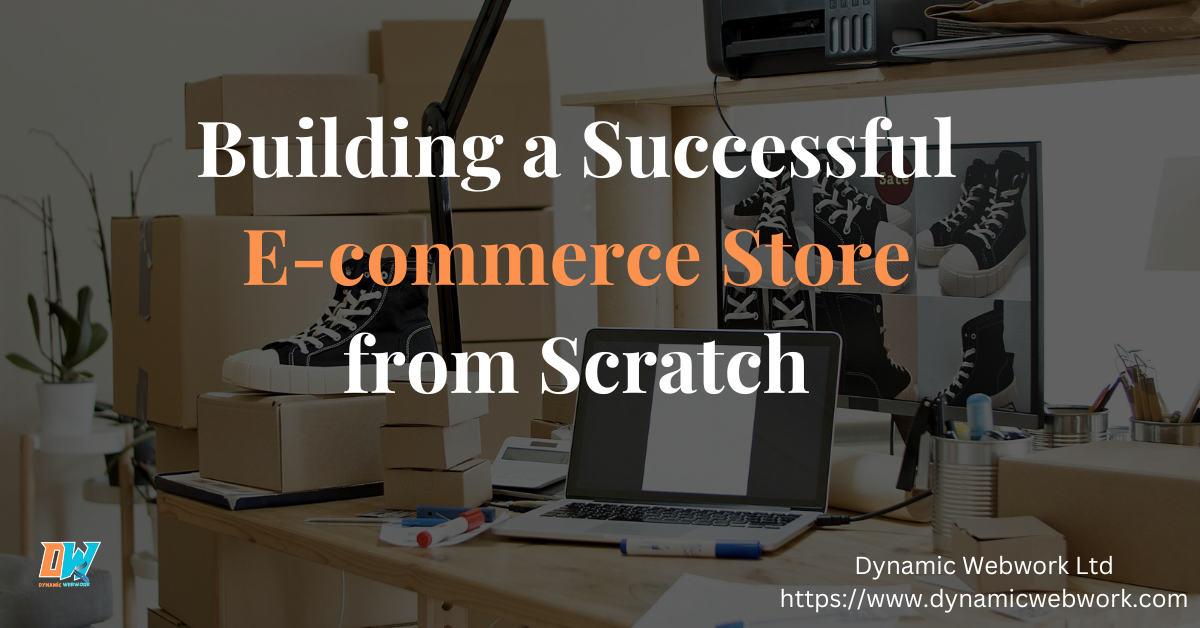Building a Successful E-Commerce Store from Scratch
In today’s digital age, starting an e-commerce store is one of the most effective ways to create a profitable business. With the global e-commerce market expected to continue its exponential growth, entrepreneurs have endless opportunities to carve out a niche. However, building a successful e-commerce store from scratch requires careful planning, execution, and ongoing optimization. Below, we’ll outline a step-by-step guide to help you launch your online store and set it up for success.
1. Define Your Niche and Target Audience
The first step in building a successful e-commerce store is identifying a specific niche. A niche allows you to cater to a well-defined market, reducing competition and making it easier to build a loyal customer base. Ask yourself:
What are you passionate about or knowledgeable in?
What market gaps can you fill?
Who is your ideal customer?
Understanding your target audience’s preferences, pain points, and purchasing behaviors will help you tailor your store to meet their needs effectively.
2. Conduct Market Research
Research is essential to validate your niche and understand the competitive landscape. Use tools like Google Trends, SEMrush, and Amazon’s Best Sellers list to identify trending products and analyze competitors. Pay attention to:
Market demand
Pricing strategies
Competitor strengths and weaknesses
By conducting thorough research, you’ll gain insights to make informed decisions about your product offerings and branding.
3. Choose the Right E-commerce Platform
Selecting the right platform is crucial for building your online store. Popular e-commerce platforms like Shopify, WooCommerce, and BigCommerce offer user-friendly features, customizable templates, and robust tools for managing your store. Consider factors like scalability, ease of use, payment integrations, and available plugins when making your choice.
4. Create a Compelling Brand Identity
Your brand is what sets your e-commerce store apart from the competition. Build a cohesive brand identity by:
Designing a memorable logo
Choosing a consistent color palette
Crafting a unique brand voice
Your branding should resonate with your target audience and convey the values of your business. A strong brand identity builds trust and fosters customer loyalty.
5. Source High-Quality Products
Whether you’re selling your own creations, sourcing from wholesalers, or using dropshipping, ensure your products are high quality. Poor-quality products can lead to negative reviews and customer dissatisfaction. Establish strong relationships with reliable suppliers and consider ordering samples to verify quality before adding products to your store.
6. Build an Engaging Website
Your website serves as the foundation of your e-commerce business. Focus on creating a user-friendly and visually appealing site by:
Using a clean, responsive design optimized for both desktop and mobile devices
Including clear navigation and search functionality
Writing persuasive product descriptions
Showcasing high-resolution images and videos
Additionally, include trust-building elements such as customer reviews, return policies, and secure payment gateways.
7. Optimize for SEO
Search engine optimization (SEO) is critical for driving organic traffic to your e-commerce store. Implement these SEO best practices:
Conduct keyword research and integrate relevant keywords into product titles, descriptions, and meta tags
Optimize your website’s loading speed
Build backlinks from reputable sources
Create high-quality blog content to target long-tail keywords
An optimized website improves visibility and helps potential customers find your store.
8. Develop a Marketing Strategy
A well-rounded marketing strategy is essential for attracting and retaining customers. Focus on:
Social Media Marketing: Use platforms like Instagram, Facebook, and TikTok to showcase your products and connect with your audience.
Email Marketing: Build an email list to share promotions, updates, and personalized recommendations.
Influencer Marketing: Partner with influencers to reach a broader audience and build credibility.
Paid Advertising: Invest in Google Ads, Facebook Ads, and retargeting campaigns to drive targeted traffic to your store.
9. Provide Exceptional Customer Service
Customer satisfaction can make or break your e-commerce store. Ensure you provide excellent service by:
Offering multiple channels for customer support (e.g., live chat, email, phone)
Responding promptly to inquiries and resolving issues quickly
Providing clear return and refund policies
Satisfied customers are more likely to leave positive reviews, recommend your store, and become repeat buyers.
10. Monitor and Optimize Your Store
Running an e-commerce store is an ongoing process. Use analytics tools like Google Analytics and your platform’s built-in reporting features to track key metrics, such as:
Website traffic
Conversion rates
Average order value
Customer acquisition cost
Regularly analyze data to identify areas for improvement and test new strategies to boost performance.
Conclusion
Building a successful e-commerce store from scratch is no small feat, but with the right approach, it’s entirely achievable. By defining your niche, creating a strong brand, and prioritizing user experience, you can lay the foundation for a thriving online business. Remember, success doesn’t happen overnight; it requires persistence, adaptability, and a willingness to learn. Start small, stay focused, and watch your e-commerce store grow!

